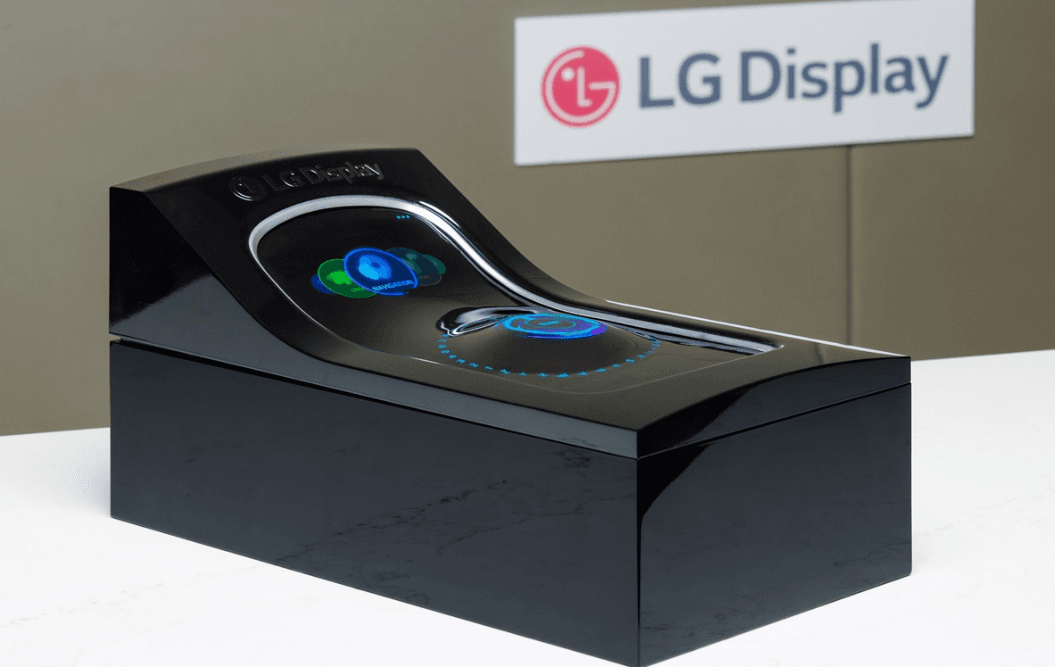
SID display, the largest event in the display making industry, is set to kick off next week and we’ve already been given a taste of what innovations we can expect to see, courtesy of LG Display.
The Korean company says that one area of focus will be enhanced automotive displays under the theme of “Driving the Future”. It’s planning to unveil a multitude of next-generation car displays, with one of the highlights being a new “stretchable” panel that merges touch controls with more traditional in-car functions.
LG Display said the stretchable OLED infotainment panel will be able to stretch by up to 50% while maintaining a pixel density of 100 DPI. It didn’t reveal the display’s native pixel density, but it’s likely to be higher than this in its most compact form, reducing to 100 DPI when it’s fully stretched out.
The company explained that it’s trying to replace what we normally see in conventional cars, where the centre fascia area requires a separate automotive display and physical buttons. Instead, by using a stretchable OLED display, the automotive screen can freely expand, allowing the buttons to merge into a single screen.
"When the screen is touched, the previously flat display flexibly expands and protrudes touch buttons, making it easy to operate even while driving,” the company explained.
It looks to be an innovative compromise between touchscreens and physical controls, and could win over quite a few people who have experience driving modern vehicles such as the Tesla range.
Teslas, along with cars such as VW’s ID sub-brand and Volvo’s EX30, have been criticised quite a bit for their touchscreens. Many drivers have complained that they’re making their lives much more difficult by replacing physical buttons and knobs for features such as audio functions and climate controls with touchscreens.
The problem is that when you’re driving a car, you need to keep your eyes on the road. In older vehicles, drivers know where these controls are and can feel them, meaning they can make adjustments while focusing their attention on what’s in front of them. But with touchscreens, there’s no ability to feel, so you’re forced to look at the display to make sure you’re actually pressing the right button. Of course, that increases the risk you’ll end up smashing into the car in front.
With its stretchable car displays, LG Display can raise these functions so users will be able to feel where they are again, enabling them to maintain their focus on the road.

LG Display has been working on stretchable OLED for years, first unveiling the concept as a prototype back in November 2022. However, it has taken a long time to fully realize the technology in terms of actual products, and it missed an earlier deadline to roll out its first stretchable OLED displays for TVs and smartphones by 2024.
The company is also working on stretchable MicroLED displays, while its rival Samsung Display has also previously shown off stretchable QD-OLED displays, but is yet to make any products.
It’s likely that LG Display will want to explore other applications for stretchable OLED technology too. For instance, bendable OLED displays are already a thing in PCs, with examples being the Corsair Xenon Flex monitor that can be curved slightly to increase immersiveness, though admittedly, not every gamer appreciates such benefits.
Besides stretchable OLED, LG Display will showcase other kinds of automotive displays at SID, including an 18-inch slidable OLED panel that can retract into the car’s ceiling when it’s not being used. It’s primarily aimed at providing entertainment for passengers in the rear, and is designed to maintain high performance and clarity in extreme weather conditions.
There will also be a new 57-inch “pillar-to-pillar” OLED display that’s able to span the full width of a car’s dashboard, which is already being supplied to some carmakers in a smaller, 40-inch form factor.
The automotive displays are unlikely to be the highlight at SID Display Week, though, as LG Display is also expected to showcase a new kind of OLED display fitted with blue phosphorescent PHOLED materials, replacing the blue fluorescent materials it uses in its current displays.
Blue PHOLED is hugely anticipated because it promises to deliver significant efficiency and performance gains, paving the way for much brighter OLED displays with significantly reduced power consumption.